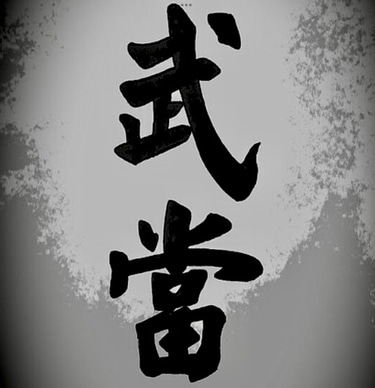Wudang internal martial arts are derived from Daoist philosophies dating back thousands of years and the Wudang mountains are an epicenter of Daoist practices. Daoism is the oldest indigenous system of philosophy in China that exists today. It is unknown who truly was the first “Daoist”
Daoism: inherently means striving for harmonious existence according to the "Dao" or "the way", the fundamental cosmic force of the universe. As in many cultures, philosophies, or religions there was a learning curve. Daoists were no different. Through the millennia, trying one thing for the next lead to ultimate fine tuning of practices that were not only good for health and longevity but martial arts as well.
Wudang martial arts are considered internal styles. There is emphasis placed on our Qi, “internal energy” which is connected to all other forms of universal Qi. Meditation is a foundational practice and helps to understand internal states of the body such as relaxation, calm clear mindedness, breathing and ultimately leads to centering and stillness. The stillness state is retained while in motion combining internal practices with the external practices of martial movements for expanding physical abilities. This holistic approach is what makes these systems unique.
The concept of Taiji or Yin and Yang is a cornerstone to all Daoist philosophies and therefore the Martial arts that were born from them.
Taiji is the stage of creation where polarities exist thus all things exist. Taijiquan(Taichi) is directly derived from this concept. Using opposing energies harmoniously like soft against hard or stillness in motion. "Be like water" is a common sayings in Chinese martial arts that owes its roots to classic Daoist texts such as the Dao De Jing. The many references to the qualities of water show high priority in Daoist principles towards stillness, flow and adaptability and therefore so does the art of Taijiquan.
The same can be said for the other internal arts such as Xingyi and Bagua although each are different like siblings from the same parents. Xingyi derived from the 5 elements and Bagua from the eight trigrams.
If Taiji is the softest/yin sibling as seen in its slow fluid approach then Xingyi is the most yang in approach due to direct power generation and forward advancing foot work. Bagua being possibly somewhere in the middle and uses circular stepping and turning power quickly. Training methods of each style are all different but the core principles the same. All are children of the ancient Daoist principle of yin and yang.
This means that there is great variation in suitability. Young or old, strong or weak there is an art under the Wudang umbrella that will most likely be beneficial, provocative and challenging. However, it is impossible to fully describe these arts so briefly because each are created from extraordinarily intricate Daoist principles and thousands of pages have been published on these subjects. One thing is for sure, there are many reasons to practice these martial arts. Whether it is for peace of mind, knowledge enrichment, fitness, health maintenance or improvement, self defense capabilities or all of the above. To find out for yourself, the only possible way is practice. For scholars who have not actually practiced are only dreaming the reality rather than living it.
Instructor Alex Dellaria has over 15 years of experience and was taught these arts by Master Zhou Xuan Yun of Wudang mountain. The legendary birth place of Taijiquan(Taichi).
Wudang Martial Arts
For more information or to schedule a class
